THE VASTNESS
2025. 8. 23 – 9. 29 | [GALLERIES] GALLERY YEH
Kim Wooyoung
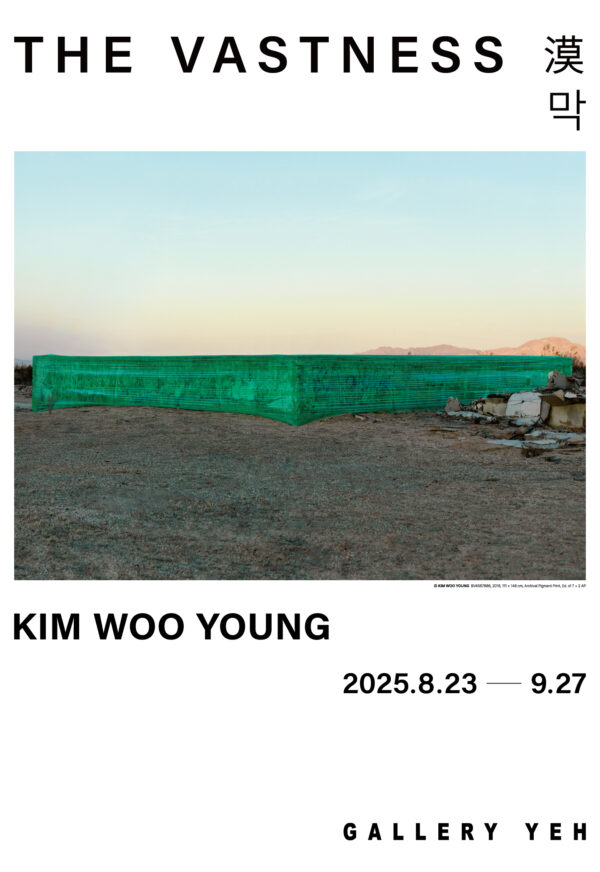
Kim Wooyoung Solo Exhibition Poster
In recent years, Kim Wooyoung has reimagined the boulevards and surrounding landscapes of the American West through color, composition, and plane in his Urban Odyssey series. His Poetics of Tranquility contemplates the quiet elegance of the foundation stones, walls, and raised platforms of traditional Korean architecture.
The Earth, Wrapping, and Billboard series presented in this exhibition exist in a temporal dialogue with the two earlier works, exchanging mutual influence. Earth shows the Mojave Desert in its desolate yet sublime landscape. Wrapping series enshrouds derelict structures wrapped with fluorescent tape, while Billboard presents fragments of the past media as archaeological artifacts. Together, these series interlace into a broader visual and philosophical inquiry – one that excavates the strata of human presence.
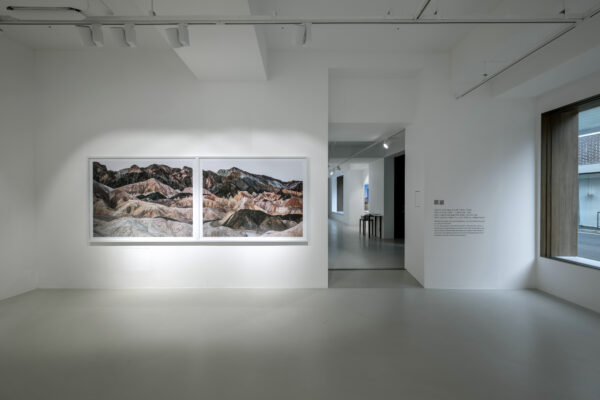
Installation View (1)
Perhaps there is no need to belabor the inherent allure of the desert as a subject. As Shin Hye-kyung writes, for artists, the desert is “an intimate refuge, a site of awakening where one learns endurance, and a house of spiritual solace and rest”. Yet above all, the desert attracts the attention of a metropolitan man whose urban life and environment stand in radical opposition to its essence. Within the desert, we are compelled to dwell and to await the unfolding of light and color. This act of dwelling is, as Adorno suggests, an indispensable temporal experience for the reception of art (223). We must note that such a redemptive time applies not only to the dilettantes but also to the artists themselves. To dwell is distinct from to wait, as it does not anticipate a specific outcome or a subject in the future. It is a temporal experience similar to the idle wandering. Some even argue that this kind of dwelling is a gesture of resistance, an anti-capitalist agenda that opposes the ceaseless accumulation of things. To me, however, dwelling is a state of enchantment – a singular moment of beauty where we retreat entirely to the aesthetic realm to appreciate a subject. It is a time that makes aesthetic rapture possible.
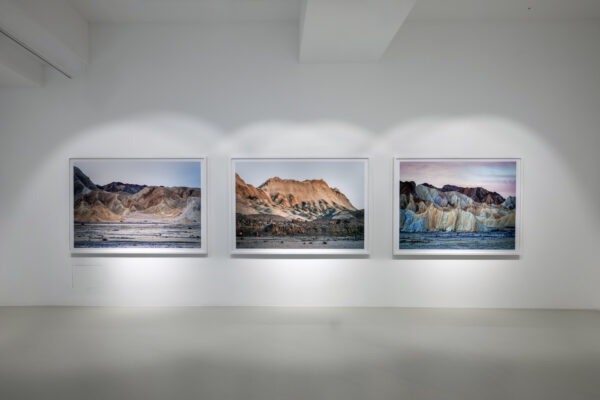
Installation View (2)
Kim Wooyoung’s desert captures such moments of dwelling – the eternal instant – through his standard lens.
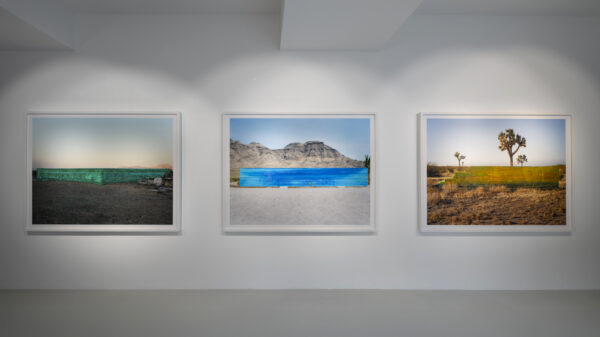
Installation View (3)
We find an important stance on life in Dostoyevsky’s The Brothers Karamazov. Ippolit Kirillovich, the prosecutor, describes a human condition defined by the sublime and the abject with his famous ‘two abysses’ analogy. He argues that we must always contemplate two abysses at the same time: “the abyss above us, the abyss of the loftiest ideals, and the abyss below us, the abyss of the very lowest, stinking degradation” (892) . This existential duality resonates deeply with Kim Wooyoung’s approach to life, in which he voluntarily wanders in search of the right moment to click the shutter. His photography of the flesh of the Earth – the desert – and the billboards and the temporary buildings standing like bones in the uninhabited plains can be interpreted as a traversal between the finite and the infinite, and the secular and the eternal. We should conclude that his landscape photography is the result of his contemplation of both life’s splendor and squalor – we find strong traces of such speculation in that the photographs do not aim at mere aesthetics but pursue themes of the accumulation of time (the desert), the traces of life (the billboards), and light (the fluorescent wrapping tapes).
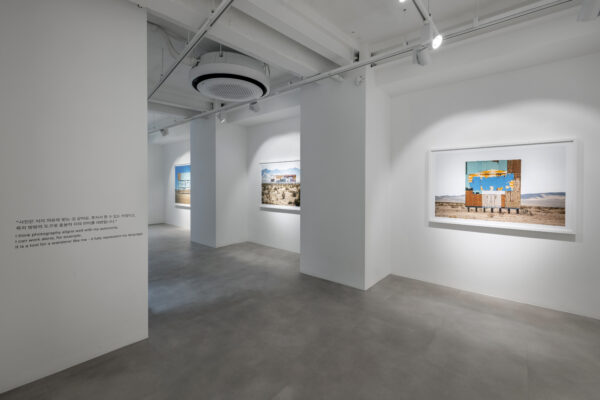
Installation View (4)
Mysticism, dream, and magic appear from the simultaneous tension between reality and dream, certainty and uncertainty – in other words, between light and darkness.
– Patrick Modiano, Sleep of Memory
The way dreams or the surreal connect to life does not arise from the distinct boundary between the two worlds. Rather, it emerges from their indistinct overlapping. Such is why dream appears as a reflection of waking moments of life, whereas reality often takes shape using the raw materials of dreams. Landscapes mix past dreams and reality into one. Just as we fear not the hidden stars in the brightest and hottest glare of midday, and just as we fall into a peaceful slumber through stormy nights where islands are veiled by waves, the landscape continues to exist. And life goes on.
GALLERY YEH
100, Changdeokgung-gil, Jongno-gu, Seoul, KR
+82 2 542 3624
[GALLERIES] GALLERY YEH
- Address
- 100, Changdeokgung-gil, Jongno-gu, Seoul, KR
- Dates
- 2025. 8. 23 – 9. 29
- Artists
- Kim Wooyoung











